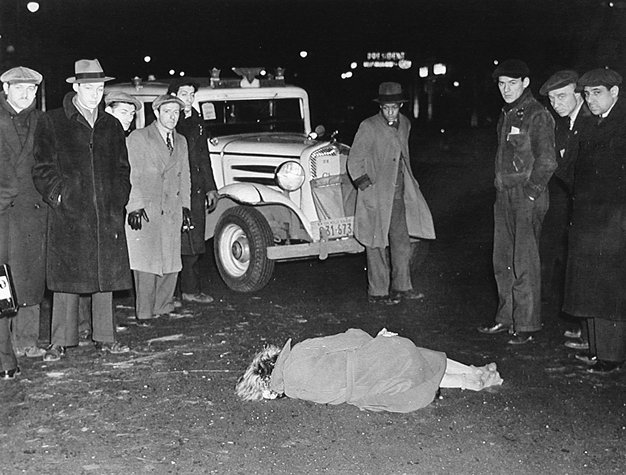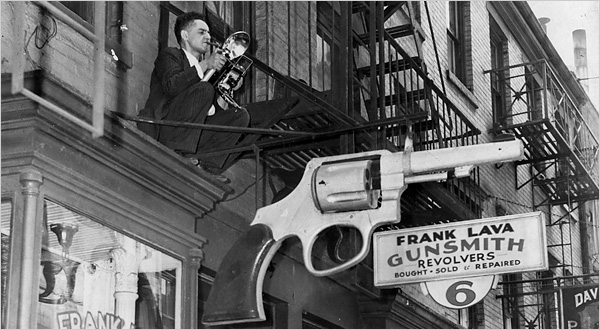
I was recently reading an Art in America article by that excellent Luc Sante about the tabloid photographer Weegee, which reminded me of a 1946 Life piece about the shutterbug. From “Weegee Shows How to Photograph a Corpse“:
“As part of a six-week photography seminar at Chicago’s Institute of Design, the stubby, untidy, cigar-chewing Manhattan photographer who calls himself Weegee and who is famous for his pictures of mayhem and murder recently enlivened his course in spot-news photography by showing students how to photograph a corpse. After one of his lectures (‘Now, a stiff…they’re the nicest kind of subject. They don’t try to cover up…I always try to make ’em look nice and comfortable’), Weegee procured a dummy and a plastic $1 revolver, cheerfully set out on a field trip to demonstrate the technique.
In Lincoln Park, Weegee sprawled the pasty-faced tuxedoed dummy on a sidewalk, advised, ‘That’s the way they are, unless it’s a dumbed-up job.’ Yhen he circled the body, disarranged its clothes, hoisted his 8-year-old Speed Graphic and squeezed off a picture.
Up to a year ago, Weegge (real name: Arthur Felig) was New York City’s most remarkable police-beat photographer. From a $17-a-month room littered with a police radio, cigar boxes full of negatives, cardboard cartons containing flash bulbs and shoes, and a dingy double bed in which he usually slept with his clothes on. Weegee roared off nightly in a rickety 1938 Chevrolet to cover fires, accidents and violent deaths. A bachelor, he worked from midnight to 7a.m., detested telephones, kept his savings in the back of his car and managed to get the laundry done once a month. Now all that is changed. His increasing fame has led him to buy a tuxedo, to publish a book (The Naked City, Essential Books, $4), to take up free-lancing for publications like Vogue and to announce that he would never again ‘photograph anybody laying on the ground, waiting for a hearse, with blood all around them.’ Today Weegee photographs society and cover girls (‘The body beautiful…alive, I mean.’), claims he meets a better class of people and even sleeps in pajamas ‘except when I’m very tired.'”




